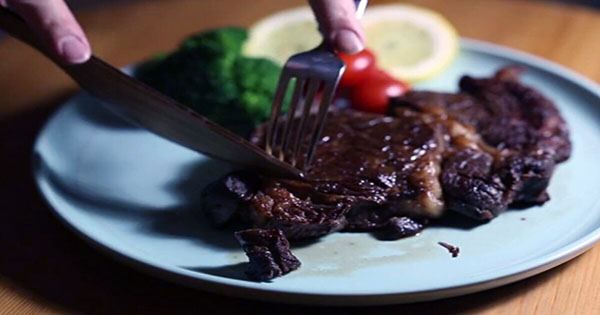Knives are normally made of steel or ceramic, but researchers have devised a method for making sturdy knives out of wood. Hardened wood is the material in concern. Material scientists have created a knife that is three times sharper than a stainless-steel dinner table knife by making wood 23 times tougher. In the journal Matter, the approach and findings were published. Hardened wood blades are projected to be far more sustainable than steel and ceramic knives in terms of production. In addition, like conventional knives, they can wash and reuse.
In a statement, senior author Teng Li of the University of Maryland noted, “The knife cuts through a medium-well done steak readily, with equivalent performance as a dinner table knife.”
It’s not just cutlery, though. Other types of things where iron and steel are usually utilized could benefit from the usage of hardened wood. The team put nails to the test as an example. Three boards of wood fastened together without the nail dulling in the process. The team’s motivation for this project stemmed from their recognition that human-made materials may often meet needs that natural-based materials cannot. Even they have the potential to do so if given the proper care.
“Cellulose, the major component of wood, has a better strength-to-density ratio than most manmade materials, such as ceramics, metals, and polymers,” Li added, “yet our current use of wood barely scratches the surface of its full potential.”
Wood contains 40 to 50% cellulose, but the remaining components, hemicellulose, and lignin are less strong. These components were removed throughout the hardened wood process, allowing the material to reach its full potential. “It’s a two-step procedure,” Li explained. “We partially delignify wood in the first phase. Wood is typically stiff, but after the lignin is removed, it becomes soft, supple, and squishy. In the second phase, we use a hot press to densify and remove the water from the chemically prepared wood by applying pressure and heat to it.” The procedure improves the strength of wood by removing natural flaws. It can then moulded into any shape you like.
The researchers are looking at how often the chemicals used in the processing can be reused and how much energy is required, so they can compare the environmental impact of this technology to older methods. “We have numerous wood components in our kitchen that we have used for a long time, such as a cutting board, chopsticks, or a rolling pin,” Li explained. “If you resurface, sharpen, and maintain them properly, these knives, too, can be reused many times.”
















